What and how to water the beets for sweetness?
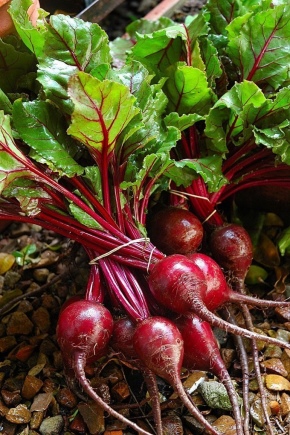
Many gardeners grow beets on their plots. The plant is not particularly capricious. But in order to get a high-quality and tasty harvest, you still need to pay a little attention to caring for it.

Reasons for the appearance of bitterness
The taste of root vegetables depends on many reasons. As a rule, beets are bitter and tasteless when the rules for their cultivation are violated. This can lead to:
- use of low-quality seed material;
- planting beets on acidified soil;
- improper watering of plants;
- lack of nutrients;
- too late harvest.
If you choose a suitable site for planting beets, as well as responsibly treat the selection of planting material, you can avoid half of the problems.
The rest are easily solved by proper feeding.
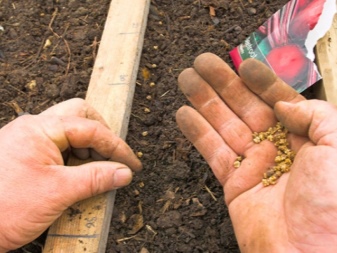

Recipes
To fertilize plants, you can use both chemical preparations and folk remedies. Most of the products that are used to feed beets are sold at a regular pharmacy or garden store.
- Boric mixture. Once a season, a boric acid solution is used to feed root crops. To prepare it, you need to mix 1 tablespoon with 1 bucket of water. Spraying with this mixture will increase the sugar content of the beets. In addition, boric acid will increase yields and make beets more suitable for long-term storage.
- Potassium permanganate solution. This mixture can be used to feed plants several times per season. To prepare the solution, you need to mix 1 teaspoon of potassium permanganate powder with 1 bucket of water. Using this top dressing will also help protect the beets from diseases such as putrefactive leg.
- Superphosphate... This top dressing will help to activate the growth of root crops. To prepare a solution, 5 grams of the drug must be diluted in warm water, following the instructions on the package. It is necessary to apply the product during the period of active growth of beets.
Do not use store-bought fertilizers too often, because this can lead to the accumulation of nitrates in the fruit.


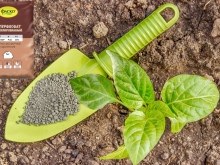
Those who like to grow everything on their site without chemicals should pay attention to natural fertilizers. They work just as efficiently.
- Nettle... To prepare the infusion, you will need 3 kilograms of finely chopped grass, pour 10 liters of water, and then mix everything thoroughly. After that, the mixture should be put in a warm place for 2-3 days. After this period, the infusion must be filtered and used as directed.
- Salt... The saline solution is useful not only for gaining sweetness - it perfectly protects the beets from harmful insects. To prepare it, you will need 65 grams of table salt, pour 1 bucket of clean water. After the mixture is thoroughly mixed, it can be used as a top dressing. Watering the roots with this solution is necessary three times a season. For the first time, treatment with saline is necessary when six leaves appear on the beets. The second time, the beets are fed after 14 days. In the third - after another 2 or 3 weeks.
- Chicken droppings. A solution with bird droppings will make the root vegetable not only sweet, but also juicy. To prepare it, you need to pour 2 kilograms of droppings with 1 bucket of water. Then the solution must be placed in a warm place for infusion for 5-7 days. After this time, the mixture must be filtered and then diluted with water in a ratio of 1 to 10. Watering is not necessary on the beets themselves, but on the ground around them.
- Ash... This remedy will also help to increase the sugar content of the beets.To prepare the solution, you need to mix 200 grams of wood ash with 10 grams of salt and 1 bucket of water. You can use the plant treatment solution immediately. This top dressing will saturate the plant with the elements it needs and protect it from fungal diseases.
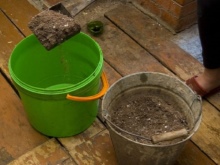


How to feed?
You need to fertilize root crops throughout the season. Beets must constantly receive all the necessary substances. After all, their lack negatively affects its quality and taste.
- At the very beginning of the growing season, root crops need nitrogen-containing dressings.... The use of nitrogen helps to increase yields. However, it should not be abused. It is recommended to introduce nitrogen into the soil no more than one or two times.
- During the entire growing season, beets need phosphorus.... Feeding the plant with fertilizers that contain it will ensure the rapid growth of beets, as well as protect them from most common diseases. The lack of this element leads to the fact that the leaves lose color and turn red at the edges.
- For beets to grow large and sweet, they also need potassium.... It retains moisture in roots, making them juicier, and helps protect plants from various diseases. With a lack of this substance, the leaves begin to turn yellow.

Fertilizers containing all these useful elements can be applied both under the root and along the leaf. It is necessary to feed beets, like other plants, in warm and calm weather. The optimal time for this procedure is early morning or evening.
It is also worth remembering that red beet is a moisture-loving plant. To grow a high-quality crop at home, it must be properly watered. In dry and hot weather, this should be done every three days. Lack of moisture will cause the fruit to be bitter and tasteless.
After watering, the soil must be loosened. It is recommended to cover the aisles with a layer of mulch. This must be done so that there is no excess moisture in the soil. For this, either sawdust or hay is used. Mulching the soil is also excellent at protecting beets from pests.
If you follow these simple rules and provide the beets with all the elements they need for normal development, they will always be juicy and tasty.
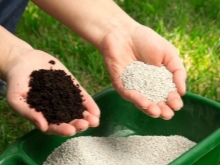

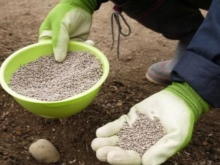
See below for more details.













The comment was sent successfully.